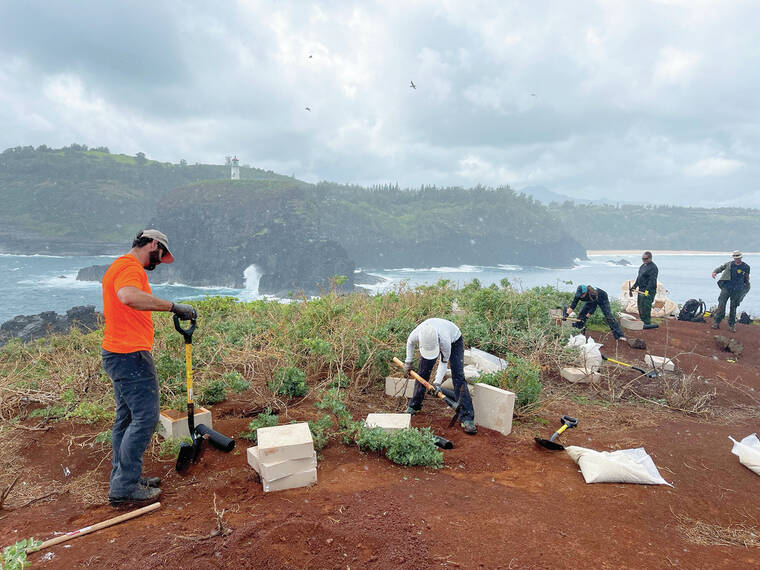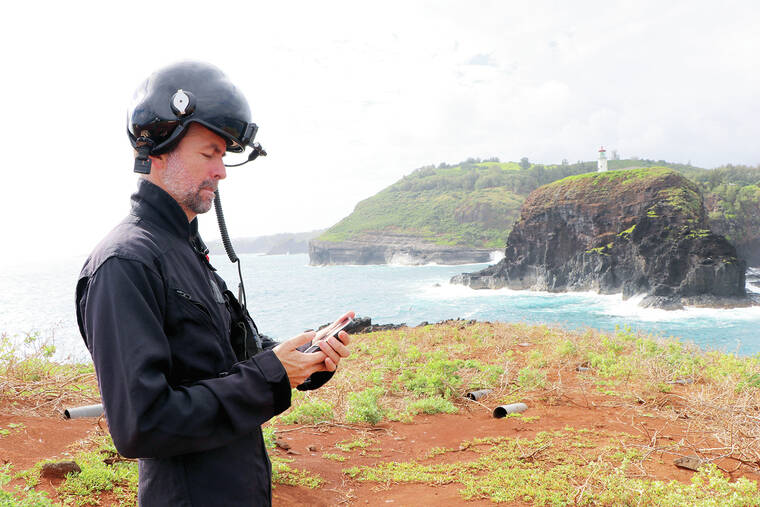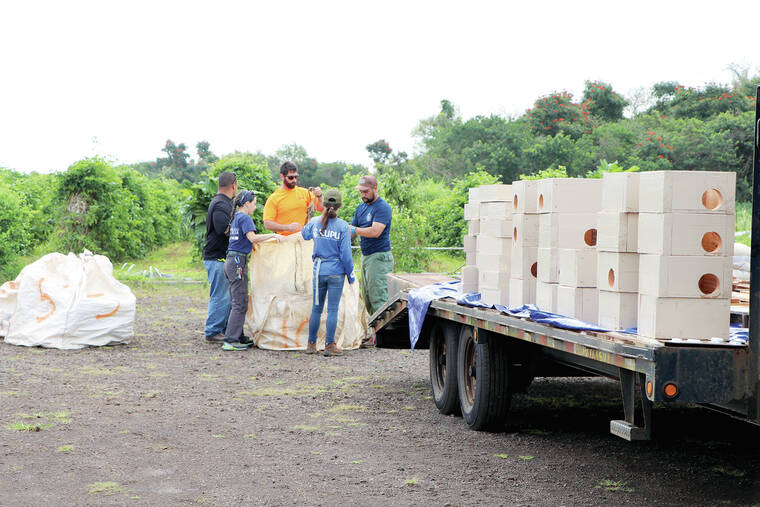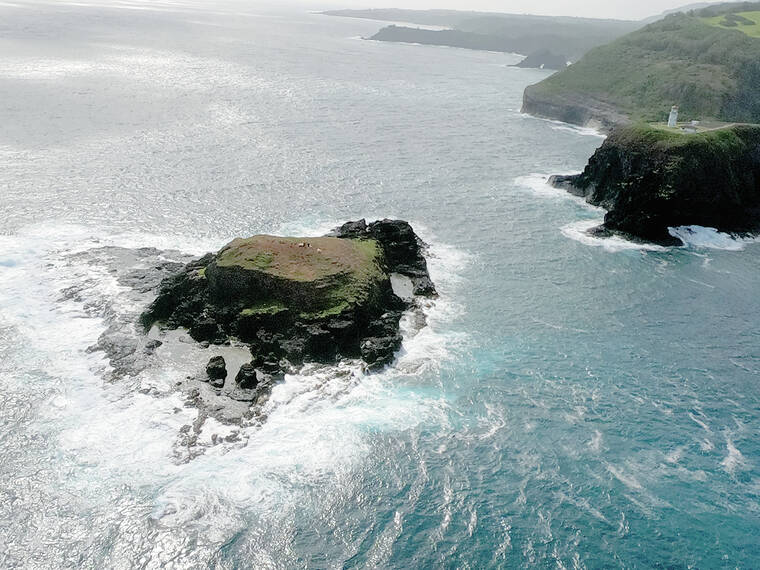KILAUEA — Seabirds nesting on three-acre Moku‘ae‘ae Island, just off Kilauea Point, have one of the best views of natural and manmade features in Hawai‘i.
The iconic Kilauea Point Lighthouse is in full view atop the rugged cliffs, often inhabited by thousands of seabirds.
Last week, workers from the state Department of Land and Natural Resources Division of Forestry and Wildlife, the Kaua‘i Endangered Seabird Recovery Project and volunteers from Archipelago Research and Conservation, took the first steps to create a new colony of band-rumped storm petrels on Moku‘ae‘ae.
The species is listed as endangered both at the federal and state level. The work is intended to also enhance the colony of Bulwer’s petrels already breeding on the island.
On Friday, just up the road from the lighthouse, workers loaded nest boxes for the birds into large canvass bags. Earlier, a helicopter had dropped three people on the island, and then made five additional trips to sling-load supplies over. The boxes are set out as burrows, with the hope they will become nesting homes for two species of seabirds.
“For these nest-enhancing projects, we expect our actions will help increase breeding success for the species, increase their breeding ranges and increase our own capacity to study these enigmatic species,” said Dilek Sahin, KESRP project coordinator.
The team set up 50 nest boxes and calling systems to try and attract the band-rumped storm petrels. A new colony, created by this social attraction, will make research more accessible and management activities more effective.
The boxes were built specifically to allow these small petrels in, while keeping the larger wedge-tailed shearwaters out. Researchers say this will help reduce “inter-specific” competition, helping to increase nesting success for the target seabirds
Sheri S. Mann, the DOFAW Kaua‘i branch manager, was one of the driving forces behind the Lehua Island Restoration Project. The much larger Lehua, like Moku‘ae‘ae, is also managed as a State Wildlife Sanctuary, and is now free of rats, which had a long history of devouring seabird eggs and chicks.
Dr. André Raine, ARC science director, did extensive work on Lehua, and was on hand on Moku‘ae‘ae to accept sling-loads of burrow boxes and sandbags to hold them in place.
The chopper lowered one load to where Raine was standing on a small spit of sand surrounded by rugged rocks.





